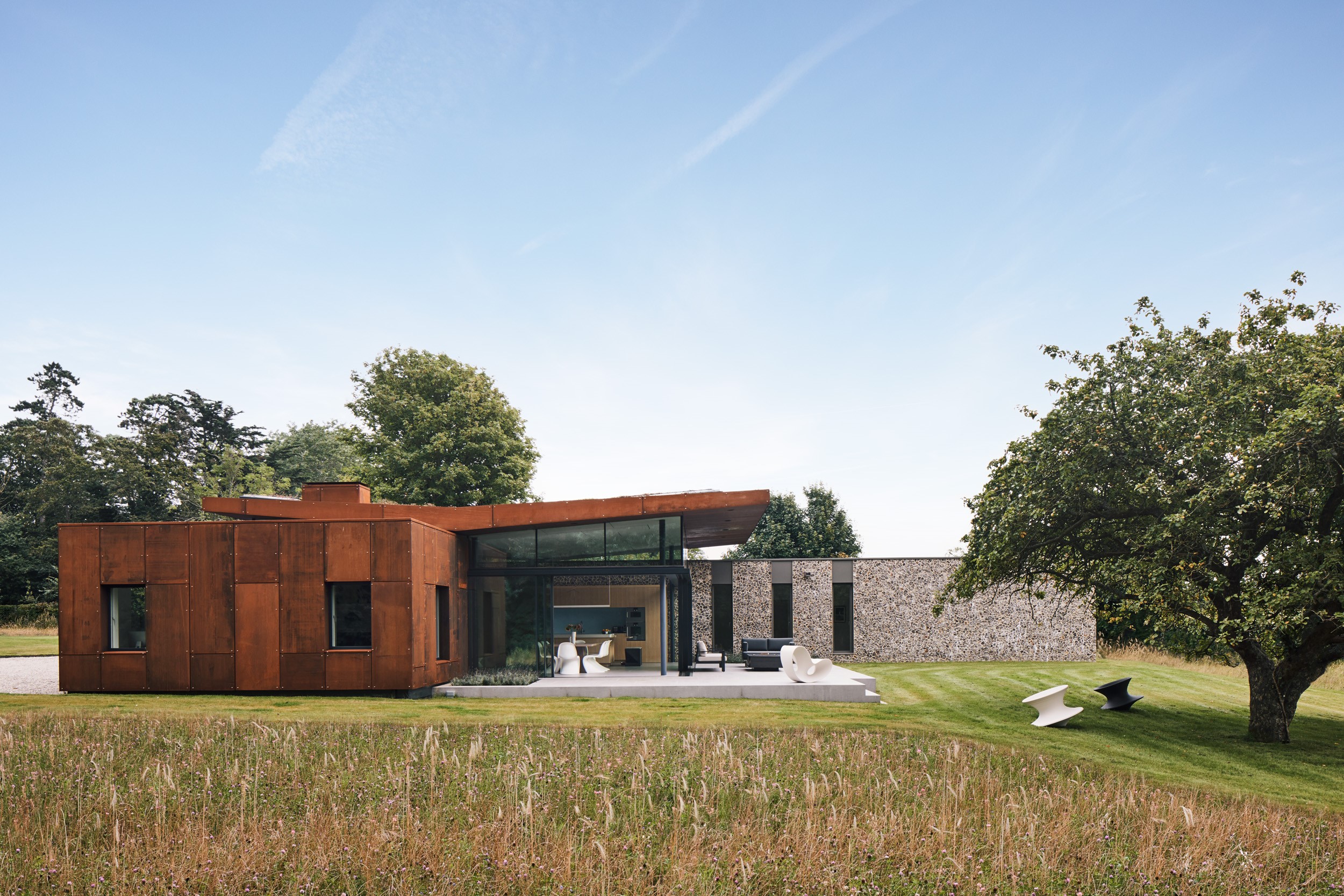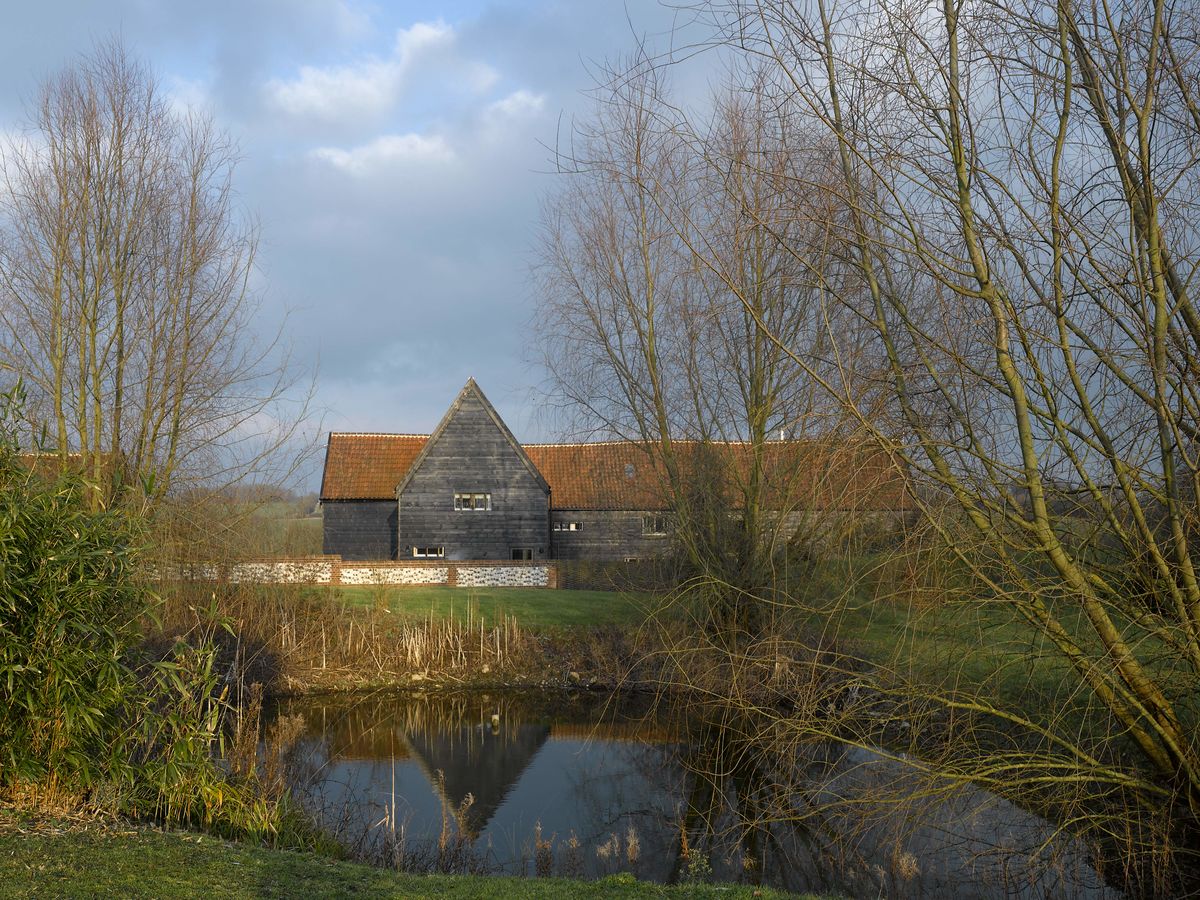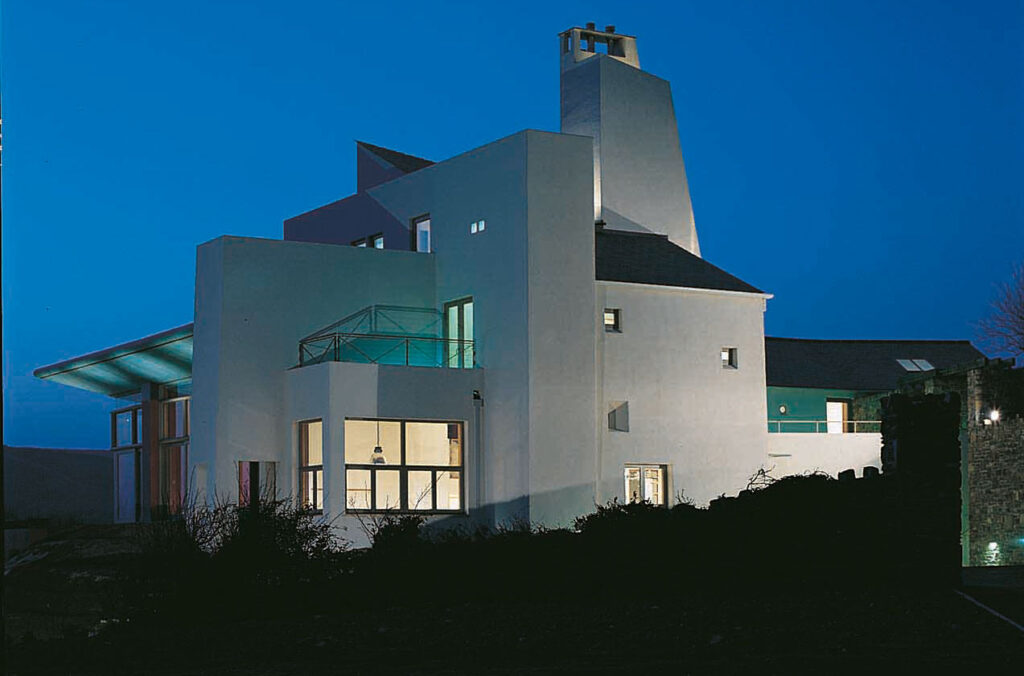
Baggy House, completed in 1994, stands as a striking example of how architecture can respond thoughtfully to its environment. Located on Baggy Point in North Devon, this six-bedroom family home celebrates its 30th anniversary as a model of both design excellence and sustainability.
Featured in the Twentieth Century Society’s Coming of Age campaign, Baggy House stands out as a key example of contemporary design integrated with local vernacular traditions. It is a pioneer in sustainable residential architecture, showcasing the early adoption of environmentally conscious design strategies that are now more relevant than ever. As we celebrate this milestone, we reflect on how the house continues to influence and inspire thoughtful, sustainable design
Design in Context
Baggy House was conceived with a strong desire to integrate into the North Devon UNESCO Biosphere Reserve, ensuring it was as much a part of the landscape as the coastline it sits upon. The design blends modernist aesthetics with vernacular architecture, creating a family home that sits lightly within the dramatic coastal surroundings.
Key Features:
- North-facing masonry walls: These walls serve to absorb and retain heat, keeping the house warm during the colder months.
- South-facing façade of timber, steel, and glass: Maximises solar gain and natural light, reducing the need for artificial heating and lighting.
- Natural ventilation and lighting: Designed to reduce reliance on mechanical systems, demonstrating how sustainable architecture can enhance both comfort and efficiency.
At Hudson Architects, we see Baggy House as a beautiful example of how architecture can address both the natural environment and the practical needs of modern living.

A Coastal Setting
Set against the stunning backdrop of Baggy Point, Baggy House embodies our belief that architecture should respect its environment. The house’s careful choice of materials – from the local stone to the lightweight, natural materials used on the southern side – helps it to blend harmoniously into the landscape, allowing the rugged beauty of the coastline to remain the focal point.
This coastal location is not only picturesque but ecologically rich. Home to various wildlife, including seals and peregrine falcons, the area has been a key influence in the design process. By using materials that reflect the textures and colours of the cliffs, Baggy House celebrates the natural landscape while minimising its impact.
Historical Significance:
- The area’s Second World War training grounds add an additional layer of historical context.
- Baggy Point is a haven for walkers, climbers, and nature enthusiasts
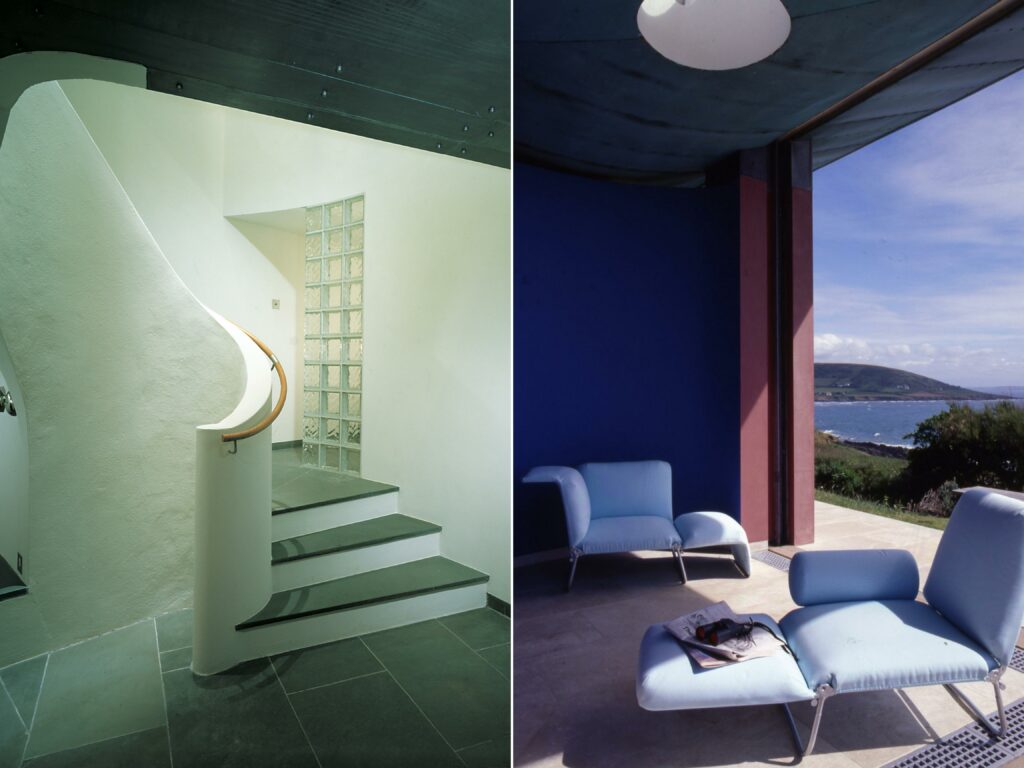
Sustainability at the Forefront
At Hudson Architects, we have always believed that design should serve both people and the planet. Baggy House is an early example of how sustainability can be fully integrated into residential architecture.
The house was designed from the outset to minimise environmental impact. With passive solar gain, natural ventilation, and durable, low-maintenance materials, Baggy House exemplifies how careful design decisions can result in an energy-efficient home that will last for generations.
Sustainable Features:
- Passive solar heating: Harnesses the power of the sun to naturally warm the house.
- Natural ventilation: Ensures fresh air circulation without the need for mechanical cooling.
- Durable materials: These contribute to the house’s long-term resilience and minimal maintenance.
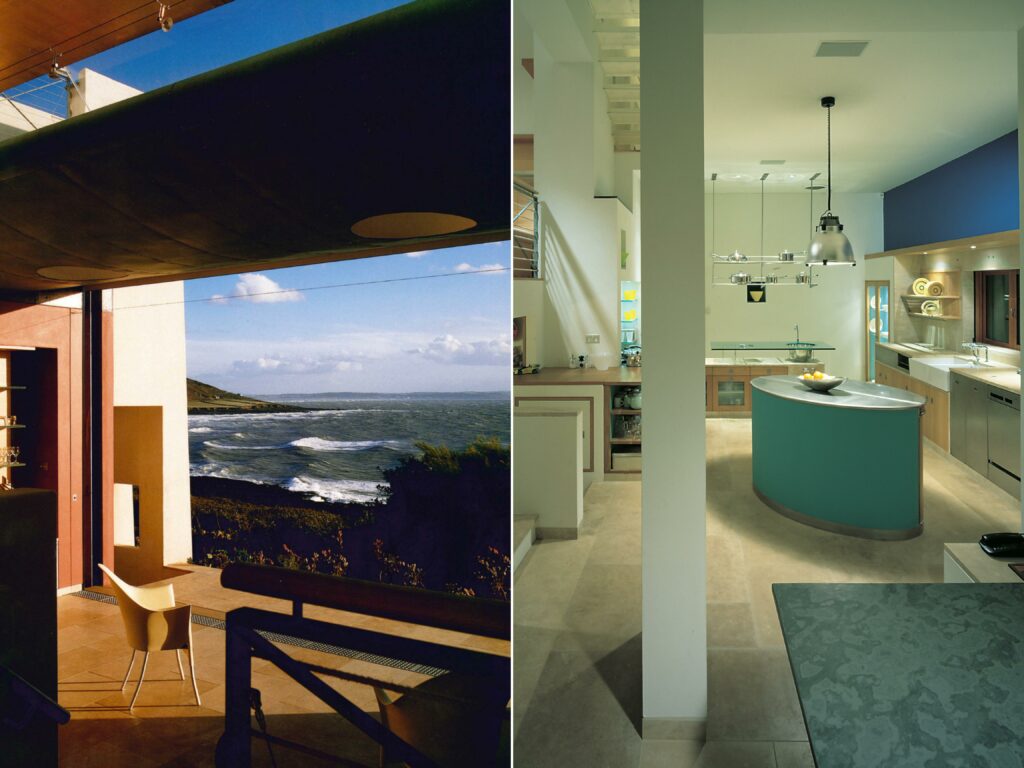
Twentieth Century Society’s Recognition
As part of the Coming Of Age campaign, the Twentieth Century Society has recommended Baggy House for national listing. This campaign advocates for the recognition of buildings that, though less than 30 years old, have already proven their architectural significance.
In the past, structures under 30 years old were often overlooked for listing, but this campaign seeks to address that gap, ensuring that buildings like Baggy House are preserved for future generations. The campaign highlights the importance of recognising buildings that have stood the test of time and are now reaching a critical stage in their lifespan, where refurbishments can be done sustainably, keeping the building’s architectural integrity intact.
Alongside other remarkable 1994 buildings such as Waterloo International Terminal and Glyndebourne Opera House, Baggy House stands out as a beacon of design excellence, particularly in its integration with nature.
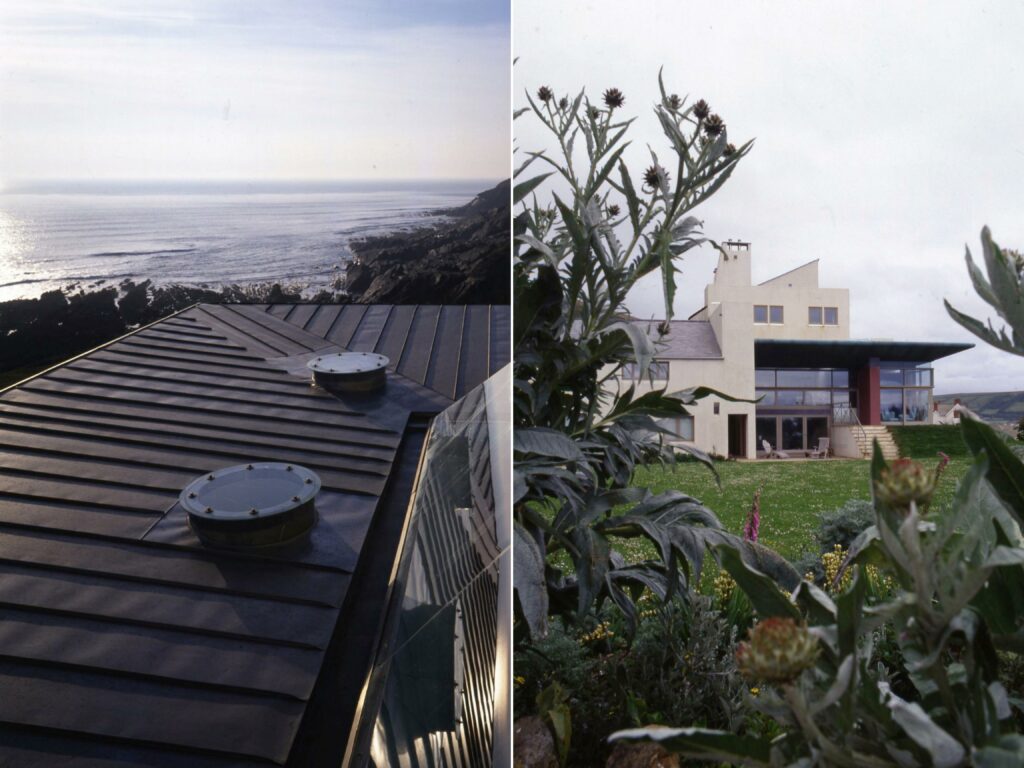
Reflecting on Baggy House
Baggy House remains an exceptional example of sustainable architecture that is both beautiful and functional. Its design is timeless, and its ability to blend into its surroundings ensures that it remains as relevant today as it was when it was first built.
As architects, we draw inspiration from Baggy House, seeing it as a powerful reminder that great design not only improves the quality of life but can also be an expression of care for the environment. The continued use of Baggy House by its original clients is a testament to its enduring success, demonstrating how thoughtful, sustainable architecture can stand the test of time.
Ready to Build Your Dream Home?
Inspired by the design of Baggy House? At Hudson Architects, we specialise in creating bespoke, sustainable homes that respond to their environments. Get in touch with us to discuss how we can help you bring your vision to life.
